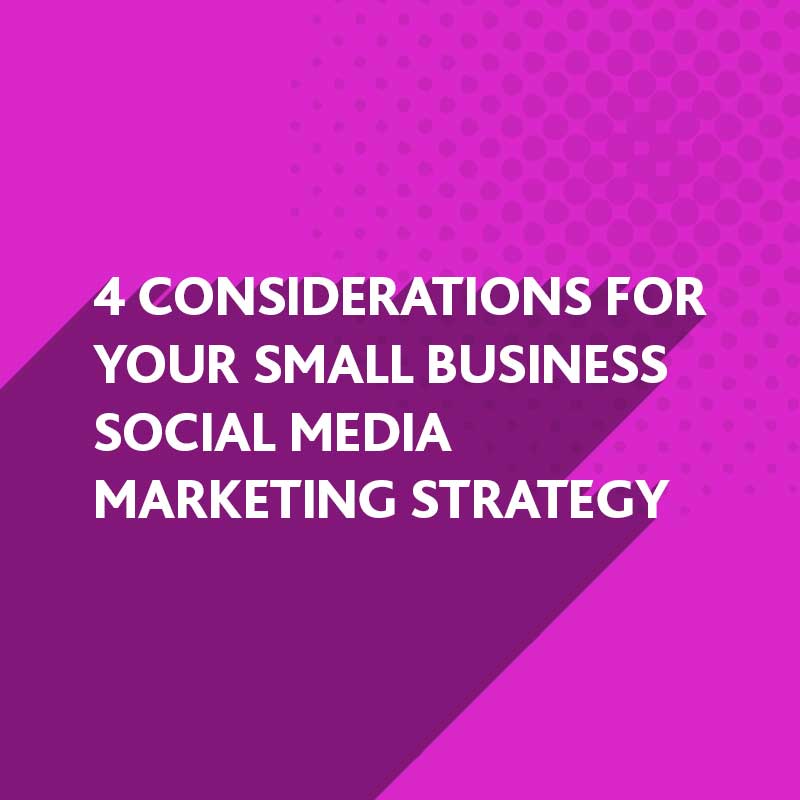
4 Considerations for your Small Business Social Media Marketing Strategy
If you’re having a tough time figuring out how to implement and use social media marketing for your business, you’re not alone.
Even those who use social media regularly are forced to constantly adapt
Over the years we’ve seen Facebook roll out its Timeline feature, Twitter enhances its brand pages, Google+ adapt its Business Branded Pages and Pinterest marketing and even Instagram marketing become viable inbound marketing cogs to the small business marketing wheel.
But regardless of your personal experience with social media marketing, there are a few things to keep in mind when deciding how to use it as part of your business’ marketing strategy.
Adjust your expectations
With many small businesses, Social Media seems to sit firmly at the top of the sales funnel and because of this they are constantly going for the hard sell. People don’t log into Facebook or check their Twitter feed looking to buy something, so don’t try to use these channels solely for that purpose. Social media is about being social (the clues in the name!) and not about pushing your latest product or offer on to your friends, fans and followers. For business, a great tip is to think of social media as discovering and familiarising others with your brand. You can find and nurture leads with social media, but it’s not the medium for direct sales.
Decide when and where to post
Eager to become involved in branded social media marketing for your business is all very well but try not to be over enthusiastic and subscribe to every channel available. It will simply become an overwhelming chore that will eat in to your time. Choose your small business social media marketing and strategy routes carefully. For example, Twitter is great for non-visual marketing and for PR monitoring. It’s also good to quickly gauge who is persuasive and what is being said within your business community. Facebook, Pinterest and Instagram are great for visual marketing and you can even use coupons on Facebook. Google+ isn’t as hot as other platforms at present, but it’s great for niche marketing and it’s growing steadily.
You’ll also need to pick a time to schedule your posts and with a little time-based post testing and some trial and error you’ll soon work this out. Ideally you will be looking for when people seem to interact with your brand the most. That’s when you should be posting.
Monitor and Analyze your efforts
Social media analytics can be tricky because you need to know three things: if web traffic is driving social media, which social medium web traffic is coming from and which individual post it’s coming from too.
There are many tools, sites and services that can help with this. Some will be free and other will be more expensive. We would recommend that a good place to start would be with Google Analytics as no doubt you already have a company website and are already monitoring your traffic through Google Analytics anyway.
Guide key followers down the sales funnel
Without question, the vast majority of your brand’s social media followers will never be your customers. But that doesn’t mean you shouldn’t devote resources to figuring out with ones might.
Create a database with information on those who interact with your brand frequently or who you’ve identified as likely customers. Try to move these folks down the sales funnel by targeting them in your posts.
Obviously, this list is not exhaustive and we would be interested in knowing your thoughts. Feel free to add your comments to this post and let us know what your Social Media Marketing Tips for the Small Business Owner would be.
